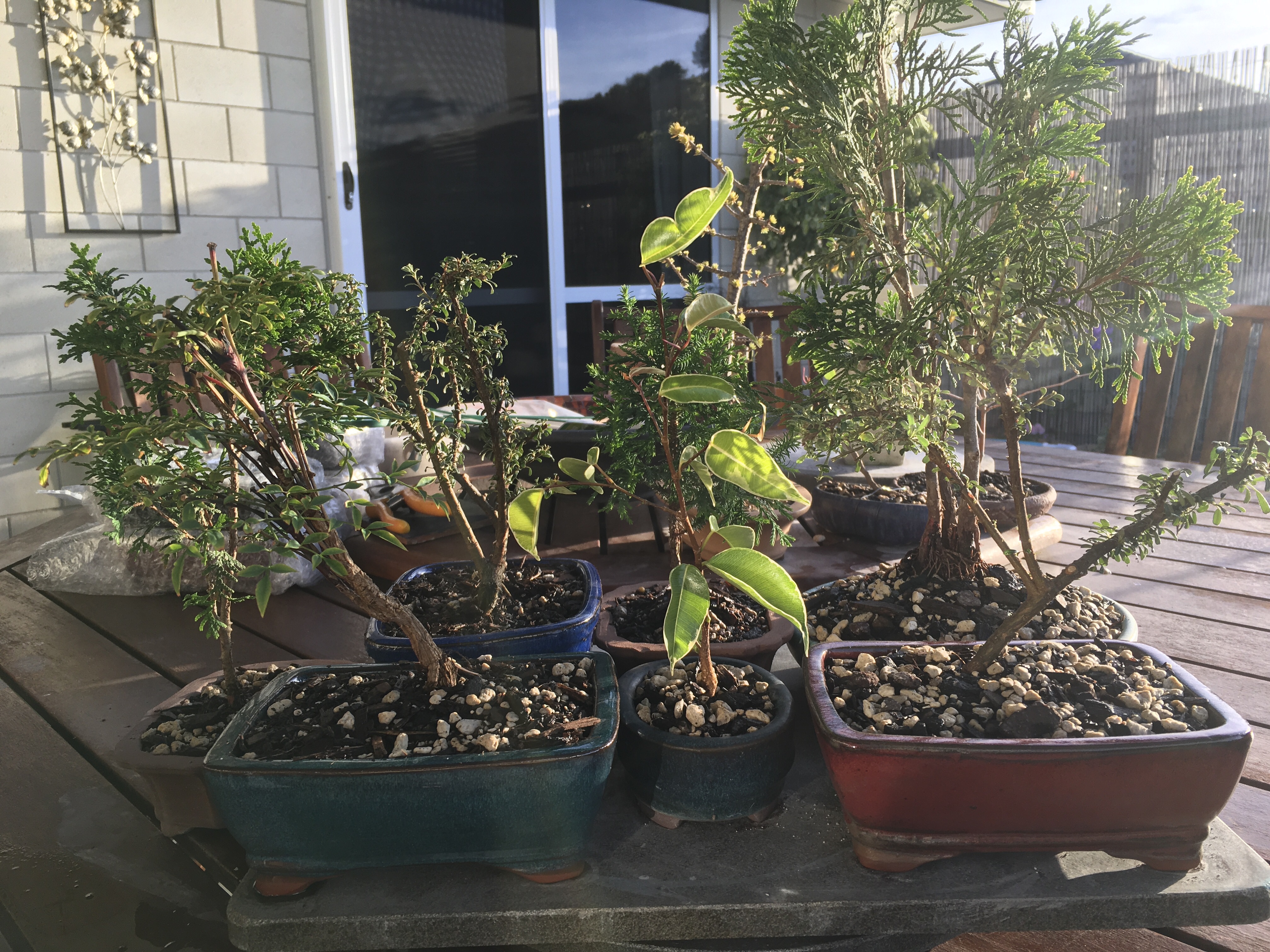One of the fastest way to get a Bonsai collection going is to find material at your local nursery to develop over time into a stunning Bonsai. Yes, it takes time, but still beats starting from seeds or cuttings. Although My private collection mainly consist of mature trees, I regularly still work on anything from cuttings to nursery material. The main reason for this is to generate stock for my wife’s fledgling Bonsai shop.
Yesterday I bought this Juniper from our local Bunnings (hardware store for those outside of Australia and New Zealand). As luck would have it, I just recently saw a mature Juniper on Instagram with a slanting main branch and a smaller branch following the contour of the main branch. Another coincidence is that I recently went on a Dolphin watching trip on Guardian, the boat used by Dolphin Seafaris in Tauranga, New Zealand. Where does this fit, you may ask. Well, there were a lot of baby Dolphins with their mothers, swimming in close proximity of the mother and mimicking what they do. It might also have to do with the fact that they suckle on mommy dolphin twenty times per hour! Need to be close for that.

The first task is to clean the tree up as selecting the front was a given with the shape I wanted it to have. The clean up consists of removing unnecessary branches, just one in this case, and then all the growth pointing to the bottom and on top of the branches. It also includes cleaning the crotches between the main branches and the lateral ones. It just makes it a lot easier to apply wire.
Then the wiring starts. The same gauge wire was used on both branches as the smaller one also needed to be twisted and bend around to follow the main branch line. You cannot just bend it over as the leaves will have their undersides on top then. It needs a twist as well.
The final product. The main slanting branch represents the mother Dolphin and the smaller one the baby Dolphin. There is my memory of the Dolphin watching trip now captured in a starter Bonsai. Now for it to rest, watered, fertilized and kept out of harsh climate conditions.

Watch this space to see the updates, further development and potting) and also follow us on Bonsaiplace on Facebook as well as Instagram.


































































